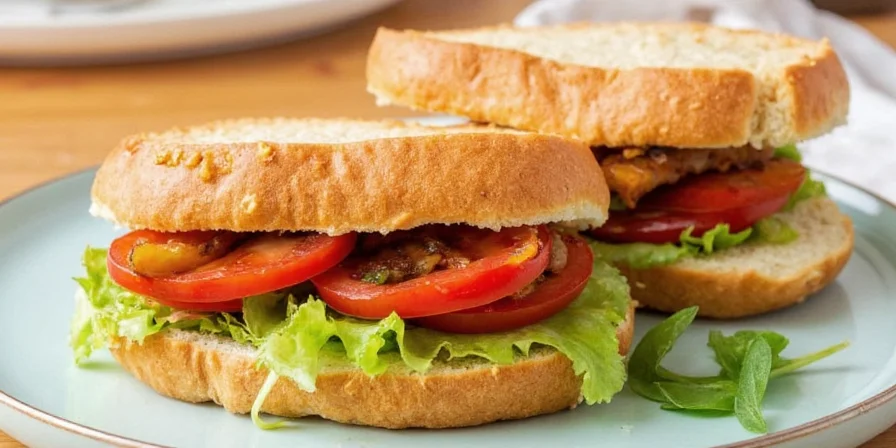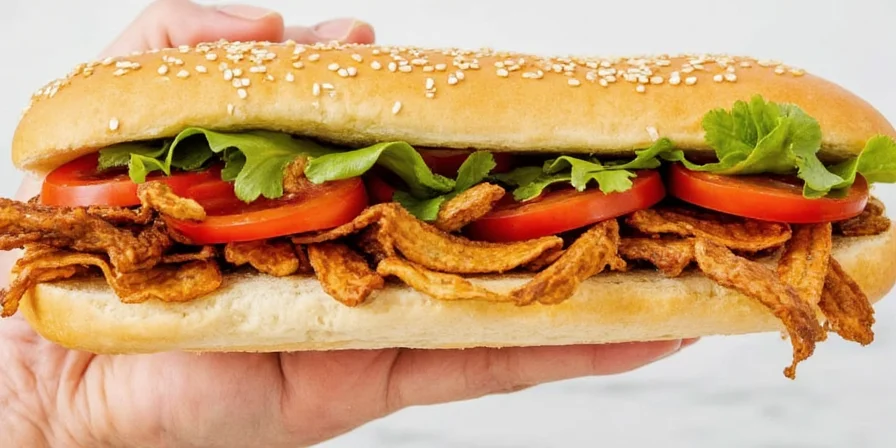Forget what you know about sandwiches. The bánh mì is here to spice up your life — literally! Hailing from Vietnam with French colonial roots, this iconic sandwich is a flavor-packed love letter between East and West. And guess what? It’s all about the spices. This guide delivers actionable insights for culinary adventurers, home cooks seeking authentic global flavors, and food professionals exploring cross-cultural ingredient fusion.
Table of Contents
- A Spicy History Lesson: How Bánh Mì Was Born
- The 7-Layer Flavor Bomb: Anatomy of a Perfect Bánh Mì
- Spice Spotlight: Key Players in That Signature Kick
- Pro Tips: Make Your Own Bánh Mì Like a Pro
- Global Twists: How the World Is Putting Its Own Spin on Bánh Mì
- Final Thoughts: Why Bánh Mì Deserves a Permanent Spot in Your Life
A Spicy History Lesson: How Bánh Mì Was Born
If food were a family tree, bánh mì would be the wildly popular cousin who married into royalty but still hangs out at street parties. Let’s rewind with historical precision:
- French Colonial Influence (1887-1954): Baguettes and pâté entered Vietnamese kitchens during occupation, but local cooks transformed them using indigenous ingredients.
- Culinary Resistance: Street vendors rejected French monotony by adding pickled daikon, fresh herbs, and chili—turning colonial imports into revolutionary street food.
- Wartime Evolution: During conflicts, bánh mì became portable sustenance using affordable proteins like tofu and pork belly, cementing its cultural resilience.

The 7-Layer Flavor Bomb: Anatomy of a Perfect Bánh Mì
One bite = seven layers of pure joy. Here’s how it breaks down:
| Layer | Ingredient | Flavor Role |
|---|---|---|
| 1 | Bread (baguette) | Crispy outside, soft inside — the perfect delivery system |
| 2 | Mayonnaise or pâté | Richness meets creaminess |
| 3 | Grilled meat, cold cuts, or tofu | The main event — protein punch |
| 4 | Pickled carrots & daikon | Tangy crunch to balance everything |
| 5 | Fresh cilantro, cucumbers, jalapeños | Fresh kick + optional fiery punch |
| 6 | Chili sauce or Sriracha | The spicy soul of bánh mì |
| 7 | Lime wedge | Sour zing to tie it all together |

Spice Spotlight: Key Players in That Signature Kick
Let’s dive into the spice cabinet behind the bánh mì magic:
- Black Pepper: Adds warmth and depth to grilled meats and sauces.
- Garlic: Used liberally in marinades and spreads for bold aroma.
- Chili (fresh or sauce): The fire starter — whether Thai bird chilies or Sriracha, it brings the heat.
- Ginger: Often used in pickling or meat prep for a sharp, aromatic kick.
- Five-Spice Powder: Sometimes sneaked into marinades for a mysterious, sweet-spicy backbone.

Pro Tips: Make Your Own Bánh Mì Like a Pro
You don’t need a Ph.D. in Vietnamese cuisine to make a killer bánh mì — just a few tricks:
- Bake Your Own Baguette: If possible, homemade or freshly baked bread makes a world of difference.
- Pickle Like a Champion: Use rice vinegar, sugar, and a pinch of salt. Quick-pickle overnight for maximum tang.
- Spice It Right: Don’t skip garlic and pepper in marinades — they’re essential for depth.
- Balance Flavors: Sweet, salty, sour, spicy, crunchy — each bite should hit all five notes.
- Use a Press: Toast your bánh mì in a panini press for that golden, melty perfection.

Global Twists: How the World Is Putting Its Own Spin on Bánh Mì
From Seoul to San Francisco, chefs are getting wild with bánh mì. Here are some global variations:
- Korean BBQ Bánh Mì: Bulgogi beef + gochujang mayo + kimchi slaw
- Mexican-Style Bánh Mì: Carne asada + avocado + chipotle mayo
- Italian-Inspired Bánh Mì: Mortadella + mozzarella + basil pesto
- Vegan Bánh Mì: Grilled mushrooms or jackfruit + vegan mayo + turmeric tofu
And yes, even Dubai has put gold flakes on a bánh mì. We’re not kidding.

Final Thoughts: Why Bánh Mì Deserves a Permanent Spot in Your Life
In a world full of boring sandwiches, bánh mì stands out like a fireworks show at a candlelight dinner. It’s not just a snack — it’s an experience. With its roots in history, explosion of flavors, and endless room for creativity, bánh mì is more than a sandwich; it’s a global celebration of spice, culture, and innovation. Unique perspective: This culinary hybrid represents a masterclass in cultural adaptation—where colonial impositions were transformed into a unifying symbol of resilience. Its layered structure mirrors how diverse influences can coexist without erasing identity, making it a delicious metaphor for globalization done right.
So next time you’re craving something exciting, forget the ham and cheese. Go for the bánh mì. Your taste buds will thank you — and so will your inner adventurer.
Top 5 Reasons to Love Bánh Mì:
- Perfect flavor harmony: sweet, salty, sour, spicy, crunchy
- Loaded with globally beloved spices
- Adaptable to any dietary preference
- Cheap, fast, and Instagram-worthy
- A true fusion of East-meets-West culinary genius
Frequently Asked Questions
What makes bánh mì fundamentally different from Western sandwiches?
Unlike single-focus sandwiches, bánh mì requires precise balance of seven distinct elements—including acidic pickles, fresh herbs, and chili heat—creating simultaneous sweet-sour-spicy-crunchy sensations impossible in traditional deli sandwiches.
Can I authentically replicate street-vendor bánh mì at home?
Absolutely. Key adjustments: use Vietnamese baguettes (lighter crumb), double mayo-pâté layer for richness, and quick-pickle vegetables overnight. Avoid overfilling—authentic versions prioritize ingredient harmony over quantity.
Why is the bread so critical to bánh mì’s success?
Vietnamese baguettes use rice flour for 50% of the dough, creating a shatteringly crisp crust with airy interior that withstands moisture without sogginess—unlike French baguettes which collapse under pickled veggie juices.
How spicy should traditional bánh mì be?
Authentic street versions include fresh bird’s eye chilies (extremely hot), but vendors adjust to customer tolerance. The heat should be noticeable yet balanced by cooling cilantro and sweet pickles—never overwhelming other flavors.
What’s the most common mistake home cooks make with bánh mì?
Skipping the double-layer protection: 1) Mayo/pâté on both bread sides creates moisture barrier 2) Lime juice added last prevents sogginess. Without these, the sandwich disintegrates within minutes.











 浙公网安备
33010002000092号
浙公网安备
33010002000092号 浙B2-20120091-4
浙B2-20120091-4